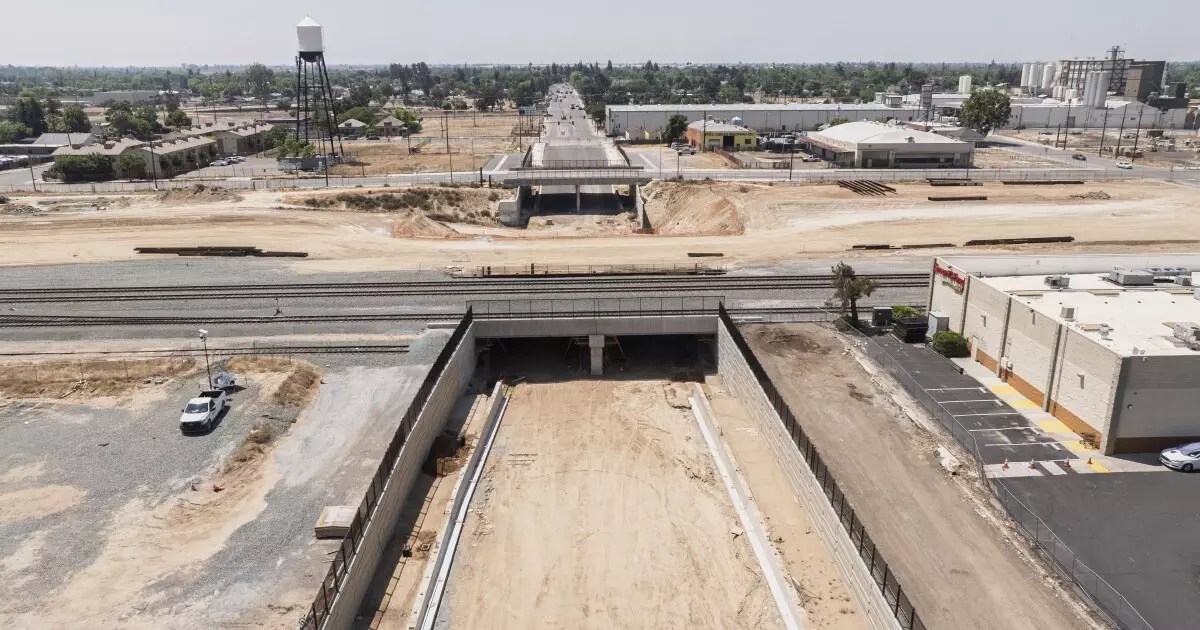In the labyrinth of American infrastructure, California’s ambitious high-speed rail project stands as a double-edged sword. On one side lies the promise of a transformative transit system, one that could connect the sprawling metropolitan areas of Los Angeles and San Francisco in a matter of hours while reducing the state’s carbon emissions. On the other side, however, is a cacophony of financial mismanagement, bureaucratic delays, and a nagging skepticism from various political camps regarding whether the monumental costs justified the alleged benefits. Recent developments have reignited this complex debate, especially considering that a solid majority of voters continue to back the initiative despite its evident shortcomings.
The Financial Quagmire
At the heart of the current conflict between the California High-Speed Rail Authority and the Trump administration’s Federal Railroad Administration (FRA) lies a staggering funding shortfall. Originally projected at $33 billion, the project’s costs have swelled to an astronomical $128 billion. This staggering rise, compounded by repeated delays, raises an inevitable question: how can a project still appeal to the public when its budget has ballooned out of control? The FRA’s stark warning regarding potential federal fund termination underscores a growing concern regarding the viability of the entire initiative.
CEO Ian Choudri’s rebuttal to the FRA’s assertions, denouncing them as “unwarranted and unjustified,” exhibits a sense of determination. Yet, one has to wonder: does this bold posture mask the deeper issues that have plagued the project? Choudri argues that state and private investments will bridge the gaping financial chasm, but the perennial question of trust in governmental and private partnerships lingers. How often have taxpayer dollars been funneled into projects only to see them dissolve in a quagmire of bureaucratic inefficiency?
A Surprising Level of Public Support
Despite the undeniable troubles, optimism is palpable among California voters. A recent poll indicated that a remarkable 67% of registered voters still favor the continuation of the high-speed rail project. This level of support starkly contrasts with the increasing calls for fiscal conservatism emanating from skeptical segments of the electorate. It begs the question: What are these voters thinking? Are they swayed by the romantic notion of high-speed travel that transcends the limitations of traditional rail services and cars, or are they envisioning the promise of a more environmentally friendly method of transportation?
Yet, supporting the project amid its myriad challenges raises an ethical debate. Should citizens back a project fueled by questionable management practices? The answer seems murky, relying largely on individual perspectives on the overlapping themes of progress and fiscal responsibility.
Moving Forward: Cap-and-Trade and Private Investment
Choudri’s plan to apply California’s cap-and-trade funds as a financial crutch could serve as either a clever workaround or an elaborate shell game. With a proposed infusion of at least $1 billion annually through 2045, there lies potential for revitalizing the project’s financing. However, reliance on cap-and-trade dollars raises ethical concerns about climate policy being intricately tied to one specific project while other urgent environmental needs go unfunded.
Additionally, the potential for innovative public-private partnerships is appealing and could offer an avenue for improvement. If the California High-Speed Rail Authority can garner commitment from forward-thinking investors, the initiative may indeed hold water. However, such partnerships are fraught with risk, particularly when profit motives could overshadow accountability and efficiency in project execution.
A Race Against Time and Perception
The clock is ticking for the California High-Speed Rail project, with the FRA offering a month to demonstrate the financial viability necessary to maintain federal funding. Choudri’s commitment to exploring alternative funding mechanisms reflects a burgeoning urgency, but the sheer scale of the financial gap remains daunting. As construction milestones roll out, there’s a palpable tension between tangible achievements and the critical eye of fiscal scrutiny.
Ultimately, the future of California’s high-speed rail project resides not only in its financial strategy but also in public perception — and given the ongoing debates surrounding costs, returns, and transportation equity, that perception may very well evolve in unpredictable ways. Balancing the aspirational vision of modern transit alongside sobering financial reality could be the greatest challenge yet faced by this extraordinary undertaking.


Leave a Reply